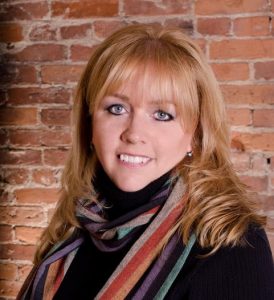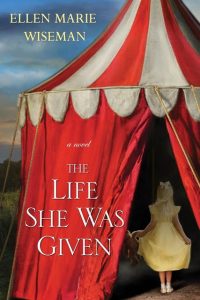Why And How I Write Novels About Tough Subjects
 I’m not sure when my fascination with the resiliency of the human spirit and the will to survive began, but it shows in the topics I choose for my novels. Maybe it was during my childhood trips to visit my grandparents in Germany, while listening to their stories about devastating poverty and living through WWII—how my grandmother risked her life to put food out for Jewish prisoners even though she could barely feed her own children, or how my grandfather was captured on the Russian front and sent to a POW camp in Siberia.
I’m not sure when my fascination with the resiliency of the human spirit and the will to survive began, but it shows in the topics I choose for my novels. Maybe it was during my childhood trips to visit my grandparents in Germany, while listening to their stories about devastating poverty and living through WWII—how my grandmother risked her life to put food out for Jewish prisoners even though she could barely feed her own children, or how my grandfather was captured on the Russian front and sent to a POW camp in Siberia.
He eventually escaped and made his way back home, but my grandmother didn’t know if he was dead or alive for two years until he showed up on her doorstep one day. Maybe it was when my mother took me inside the bomb shelter where she spent so many terrified nights as a child.
Regardless of when my interest was stirred, I grew up to write books that deal with tough issues—WWII, the Holocaust, insane asylums, child labor, animal abuse, how we treat those considered “different”—while trying to show another perspective by using historical events we often didn’t learn about in school, at the same time offering hope that humans have the opportunity to grow and change, and the strength to survive almost anything.
So it probably comes as no surprise that my debut novel, THE PLUM TREE, is loosely based on my family’s experiences in Germany during WWII. It follows a young woman through the chaos and destruction of the war as she struggles to save the love of her life, a Jewish man. Besides hopefully telling a good story, I wanted to show what it was like for the average German family while still being sensitive to what the Nazis did to the Jewish people. I also wanted to illustrate the struggles faced on the German home front by the wives and mothers who were trying to keep their families alive while the men were off fighting.
My second novel WHAT SHE LEFT BEHIND follows a young girl who, along with her foster parents (NYS museum workers) discovers an attic full of suitcases in a shuttered state asylum, left behind by the patients who checked into the institution but never checked out. It’s a duel timeline that also follows a flapper girl from the 1920’s after her family puts her in an insane asylum for refusing an arraigned marriage. This novel deals with our past treatment of the mentally ill and the fact that people could be committed for something as simple as being unable to find work or for a single angry public outburst. Women were especially vulnerable to being institutionalized and, in many cases, were kept there for the rest of their lives.
My third novel, COAL RIVER, explores one young woman’s determination to put an end to child labor in an early 20th century Pennsylvania mining town by going undercover as a Breaker Boy. The inspiration for this story came to me when I first learned that boys as young as five and six were used to sort coal ten hours a day, six days a week with their bare hands. When my main character moves to Coal River, she works in the company store, where she sees miners and their impoverished families paying inflated prices for food, clothing, and tools, while those who owe money are turned away to starve. She leaves stolen food on families’ doorsteps, and marks the miners’ bills paid. Most heart-rending of all, she learns the young breaker boys are being maimed and killed and the mining company doesn’t care.
THE LIFE SHE WAS GIVEN follows a young girl, Lilly, whose parents lock her in the attic “for her own protection” until her tenth birthday, then sell her to a circus sideshow. This is another duel timeline that features a second young woman who inherits the mansion where Lilly was kept decades earlier. The inspiration for this book stemmed from heartbreaking stories about people in the past hiding their “less than perfect” children in a back bedroom. And because I’m an animal lover, I’d be remiss in writing about the circus and not the animals who worked there.
My current manuscript is set in the slums of Philadelphia during the Spanish Flu of 1918, the worst pandemic the world has ever know. The story follows a young immigrant whose mother dies during the epidemic, leaving her to care for her twin baby brothers until her father returns from the war. Eventually she’s forced to search the quarantined city for food and leaves her brothers sleeping in a bedroom cubby, with bottles, blankets, and promises to return as soon as possible. But when she comes back, they’re gone.
One of the questions I’m asked most frequently at book presentations is “Does it bother you to write about such difficult subjects, and how do you do it?” My answer is, of course it bothers me. But I’m able to do it for two reasons. First, I’m so determined to get my point across that I somehow detach myself during the first few drafts. And second, when I’m trying to finish a 100K+ word novel on a deadline I don’t have time to get overly emotional, especially because writing is my livelihood. But when I’m rereading and polishing and editing, living deep in the world I’ve created for my characters, that’s when my stories break my heart. A few times I made myself cry so hard during revisions my husband came into my office to see if I was all right. (I’m pretty sure he left shaking his head, wondering what kind of crazy woman he married)
In the end, I write about the hard things because I believe it’s important to remember our past so we realize how far we’ve come, despite the fact that we still have a long way to go. I also believe reading about other people’s struggles can help make us more grateful for what we have and who we are, and perhaps give us hope that we can make it through the difficult times. Mostly, I owe it to the people who lived though those times to be honest about the past. Like one reader noted: These stories have to be brutal in their telling of suffering and death that is beyond imagination…only in raw honesty of the darkness, does the light of those who survived shine all the brighter.
—
A first-generation German American, Ellen Marie Wiseman discovered her love of reading and writing while attending first grade in one of the last one-room schoolhouses in NYS. She is a bestselling author whose novels have been translated into eighteen languages. Bookbub named her debut novel, THE PLUM TREE, One of Thirteen Books To Read if You Loved ALL THE LIGHT WE CANNOT SEE. Ellen’s second novel, WHAT SHE LEFT BEHIND, was named a Huffington Post Best Books of Summer 2015. Her third novel, COAL RIVER, was called “one of the most “unputdownable” books of 2015″ by The Historical Novel Review. Her fourth novel, THE LIFE SHE WAS GIVEN, was a GoodReads Book of The Month in July 2017 and is a GREAT GROUP READS Selection of the Women’s National Book Association and National Reading Group Month. Ellen lives on the shores of Lake Ontario with her husband and two spoiled Shih-Tzu’s, Izzy and Bella. When she’s not busy writing, she loves spending time with her children and grandchildren.
Facebook: www.Facebook.com/EllenMarieWisemanAuthor
Website: www.ellenmariewiseman.com
Twitter: https://twitter.com/EllenMarieWise
About THE LIFE SHE WAS GIVEN
 From acclaimed author Ellen Marie Wiseman comes a vivid, daring novel about the devastating power of family secrets—beginning in the poignant, lurid world of a Depression-era traveling circus and coming full circle in the transformative 1950s.
From acclaimed author Ellen Marie Wiseman comes a vivid, daring novel about the devastating power of family secrets—beginning in the poignant, lurid world of a Depression-era traveling circus and coming full circle in the transformative 1950s.
On a summer evening in 1931, Lilly Blackwood glimpses circus lights from the grimy window of her attic bedroom. Lilly isn’t allowed to explore the meadows around Blackwood Manor. She’s never even ventured beyond her narrow room. Momma insists it’s for Lilly’s own protection, that people would be afraid if they saw her. But on this unforgettable night, Lilly is taken outside for the first time—and sold to the circus sideshow.
More than two decades later, nineteen-year-old Julia Blackwood has inherited her parents’ estate and horse farm. For Julia, home was an unhappy place full of strict rules and forbidden rooms, and she hopes that returning might erase those painful memories. Instead, she becomes immersed in a mystery involving a hidden attic room and photos of circus scenes featuring a striking young girl.
At first, The Barlow Brothers’ Circus is just another prison for Lilly. But in this rag-tag, sometimes brutal world, Lilly discovers strength, friendship, and a rare affinity for animals. Soon, thanks to elephants Pepper and JoJo and their handler, Cole, Lilly is no longer a sideshow spectacle but the circus’s biggest attraction. . .until tragedy and cruelty collide. It will fall to Julia to learn the truth about Lilly’s fate and her family’s shocking betrayal, and find a way to make Blackwood Manor into a place of healing at last.
Moving between Julia and Lilly’s stories, Ellen Marie Wiseman portrays two extraordinary, very different women in a novel that, while tender and heartbreaking, offers moments of joy and indomitable hope.
Category: Contemporary Women Writers, On Writing

























Hi Kim, Thanks so much for the idea. I’m sure there are a lot of immigrant stories that need to be told!
Thank you so much for having me!!
What about something along the line of ellis island and the immigrants my grandmother and her sister came through ellis island one in 1922 and the other in 1923. Her husband came with his family in 1909. just a thought.